Russian and German large-caliber naval guns of the First World War
A long time ago, in my first series of articles published on "VO" and dedicated to dreadnoughts of the "Sevastopol" type, I suggested that if by some miracle in the Battle of Jutland, four Russian dreadnoughts appeared in place of the battle cruisers Beatty, then the 1st reconnaissance group Hipper would have expected a complete rout. And then, and much later, in a discussion of my other materials on dreadnoughts and superdreadnoughts of the First World War, I was repeatedly asked to simulate such a battle. Well, why not?
What is this cycle about?
In the materials offered to your attention, I will try to collect the necessary data to model the possible results of the confrontation between our Baltic dreadnoughts and German battlecruisers.
To do this, it is necessary to understand the capabilities of the Russian and German naval artillery in terms of armor penetration and the power of shells. Compare the quality of Russian and German armor. Compare booking systems in order to assess the free maneuvering zones of ships. Examine the capabilities of the LMS and determine the estimated number of hits. And then just start, actually, to the comparison.
It would be nice, of course, to balance the combat capabilities of the Sevastopol with those of the Kaiser's battleships. But not at this time. Because for this it is necessary to disassemble in detail the design of the German dreadnoughts. By analogy with how I did it in the cycle dedicated to the comparison of battlecruisers in England and Germany. However, this work has not yet been done. So we'll come back to this question sometime later.
I would like to make a special note: I will be extremely grateful to dear readers for any constructive criticism. Please do not hesitate to comment if you find any mistake in my publication.
For my part, I will attach to the main text of the articles the formulas I used and the initial data for calculations. So that those who wish could easily check the data.
Well, I'll start with an assessment of the capabilities of the Russian and German large-caliber naval artillery, which armed the ships of the dreadnought era of Russia and Germany.
Russian empire
It's easy to write about Russian artillery systems. Because it was only one - the famous 305-mm / 52 cannon of the Obukhov plant arr. 1907 year.
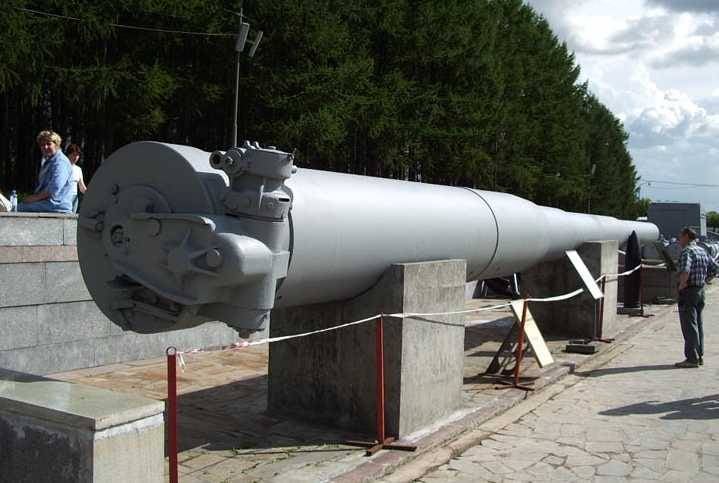
Of course, the domestic naval thought did not stop at 12 inches. And in the future, 356-mm artillery systems were created for battlecruisers of the Izmail type and 406-mm - for promising battleships. But the fourteen-inch guns did not have time to complete the full course of tests before the end of the First World War and were not installed on warships. And the sixteen-inch cannon did not even have time to be made, although the order for it was issued. Therefore, I will not consider these tools. And the same goes for the older 254mm / 50 and 305mm / 40 guns. Since the last armed squadron battleships and armored cruisers. They were never intended to be installed on dreadnoughts.
The Russian 305-mm / 52 cannon is interesting in that it was originally created according to the concept of "light projectile - high muzzle velocity". It was assumed that a lightweight 331,7 kg projectile with an initial speed of 914 m / s, and then even 975 m / s, would be fired from it.
But already in the process of creating a gun, domestic artillerymen came to the need to switch to the concept of "heavy projectile - low muzzle velocity". Which led to the appearance of arr. 1911, the mass of which was 470,9 kg, but the muzzle velocity dropped to 762 m / s.
Trinitrotoluene (TNT) was used as an explosive, the amount of which in an armor-piercing shell was 12,96 kg, and in a high-explosive shell - 58,8 kg. The sources also mention semi-armor-piercing projectiles, the weight of explosives in which reached 61,5 kg. (But due to some ambiguities, I leave them outside the scope of this article). With a maximum elevation angle of 25 °, the firing range was 132 cables or 24 m.
The Baltic battleships of the "Sevastopol" type and the Black Sea ones of the "Empress Maria" type were armed with just such weapons.
Germany
Unlike Russian sailors, who were forced in World War I to be content with a large-caliber artillery system of one project, the German High Sea Fleet was armed with as many as 4 types of such weapons (not counting those that were installed on pre-dreadnoughts, of course). I will describe them in order of increasing combat power.
The first weapon that entered service with the dreadnoughts was the 279 mm / 45 cannon.
Its shells had a mass of 302 kg, and an initial velocity of 850 m / s. The German ones for all dreadnought guns, like the Russian ones, were equipped with TNT (which greatly simplifies the comparison of ammunition for us). But, unfortunately, I do not have accurate data on the content of explosives in 279-mm shells. According to some reports, the mass of explosives in an armor-piercing 302 kg projectile reached 8,95 kg. But I know absolutely nothing about high-explosives. The firing range of 279 mm / 45 guns reached 18 m at an elevation angle of 900 °. The first German dreadnoughts of the "Nassau" class and the battle cruiser "Von der Tann" were equipped with such weapons.
Further for the needs fleet a more powerful 279 mm / 50 gun was created. She fired the same shells (as the 279 mm / 45), but with an initial speed increased to 877 m / s. However, the maximum elevation angle of these guns in turret mounts was reduced to 13,5 °. Thus, despite the increase in initial speed, the firing range decreased slightly and amounted to 18 100 m. The improved 279 mm / 50 guns were received by the Moltke and Seidlitz battle cruisers.
The next step towards improving the armament of German ships was the creation of an artillery masterpiece - 305-mm / 50 cannon. It was an extremely powerful artillery system for its caliber, firing 405-kg armor-piercing and 415 kg high-explosive shells, the content of explosives in which reached 11,5 kg and 26,4 kg, respectively. The initial rate of fire (405 kg shells) was 875 m / s. The range at an elevation angle of 13,5 ° was 19 m. Such guns were used on battleships of the Ostfriesland, Kaiser, and Koenig types and battle cruisers of the Derflinger type.
But the pinnacle of the "gloomy Aryan sea genius" was not this, in every respect, an outstanding artillery system, but the monstrous 380-mm / 45 gun mod. 1913. This "supercannon" used armor-piercing and high-explosive shells weighing 750 kg (possibly, the weight of the armor-piercing shell was 734 kg), containing 23,5 and 67,1 kg TNT, respectively. An initial speed of 800 m / s provided a firing range of 23 m at an elevation angle of 200 °. Such guns received "Bayern" and "Baden", which became the only superdreadnoughts of the Kaiserlichmarine.
We consider armor penetration
To calculate the armor penetration of Russian and German guns, I used the classic formula of Jacob de Marr.
At the same time, for all the guns, I adopted the coefficient K equal to 2000. Which roughly corresponds to the classic cemented Krupp armor of the late 279th century. This is not entirely correct. Since the quality of 305-mm, 380-mm and XNUMX-mm shells could differ slightly. But it can be assumed that this difference was not too great. Thus, the calculations below can be considered as a result of the impact of all of the above artillery systems on the cemented Krupp armor, which it was at the very beginning of the XNUMXth century.
In order to obtain the initial data for the calculations (the angle of incidence and the velocity of the projectile at a certain distance), I used the ballistic calculator "Ball" version 1.0 dated 23.05.2011/XNUMX/XNUMX developed by Alexander Martynov (whom I, taking this opportunity, sincerely thank for creating such useful program). The calculation was simple. Having set the values of the mass and caliber of the projectile, its initial velocity, the maximum elevation angle and the firing range with it, the coefficient of the shape of the projectile was calculated, which was used for further calculations. The form factors are as follows:
Russian 305 mm 470,9 kg shell - 0,6621.
German 279 mm 302 kg shell for 279 mm / 45 guns - 0,8977.
German 279 mm 302 kg shell for 279 mm / 50 guns - 0,707.
German 305 mm 405 kg shell - 0,7009.
German 380 mm 750 kg shell - 0,6773.
An interesting strangeness is noteworthy. This indicator for the 279 mm / 45 and 279 mm / 50 guns is quite different, although the mass of the projectile is identical.
The resulting angles of incidence, projectile velocity on armor and armor penetration at K = 2000 are shown in the table below.
However, it should be borne in mind that the real armor penetration in cases where the armor thickness exceeds 300 mm must be higher than the indicated values. This is due to the fact that with an increase in the thickness of the armor plate, its relative armor resistance begins to fall. And, for example, the calculated armor resistance of a 381 mm plate in practice will be confirmed only by a plate with a thickness of 406 mm. To illustrate this thesis, I will use a table from "The Last Giants of the Russian Imperial Navy" by S. E. Vinogradov.
Let's take a 300 mm armor plate made from Krupp armor of a certain quality, giving a coefficient of K = 2000 in relation to, say, a Russian 470,9 kg projectile. So, armor of 301 mm, made of absolutely the same armor, will have K slightly below 2000. And the thicker the armor plate is, the more K will decrease. over 300 mm thickness, I could not. But the formula I use gives a pretty good approximation:
y = 0,0087x2 - 4,7133x + 940,66, where
y is the actual thickness of the pierced armor plate;
x is the estimated thickness of the penetrated armor plate with constant K.
Accordingly, taking into account the relative decrease in the resistance of the armor plates, the calculation results took the following values.
Important caveat
First of all, I very much ask the dear reader not to try to use the above data to simulate a naval battle between Russian, German and other warships. They are unsuitable for such use because they do not take into account the real quality of Russian and German armor. After all, if, for example, it turns out that the Russian armor will have K <2000, and the German armor, on the contrary, K> 2000, then it is obvious that the armor penetration of shells at different distances will also change.
These tables are only suitable for comparing Russian and German naval guns when firing at armor of the same quality. And, of course, after the author has dealt with the durability of the products of German and Russian armored vehicles, the data on the angles of incidence and the speed of shells on the armor will be very important for further calculations.
Some conclusions
In general, it can be seen that the Russian approach "heavy projectile - low muzzle velocity" was noticeably more advantageous than the German concept "light projectile - high muzzle velocity". So, for example, the German 305-mm / 50 cannon fired a 405 kg projectile with an initial speed of 875 m / s. And the Russian - 470,9 kg projectile with a speed of only 762 m / s. Using the famous formula "mass multiplied by the square of the speed in half", we find that the kinetic energy of the German projectile at the exit from the barrel is about 13,4% higher than that of the Russian. That is, the German artillery system is more powerful.
But, as you know, a lighter projectile loses speed and energy faster in flight. And it turns out that already at a distance of 50 cables, the Russian and German artillery systems are equalized in armor penetration. And then the advantage of the Russian gun goes on increasing. And at a distance of 75 cables, the advantage of the Russian gun is already quite noticeable 5,4%, even taking into account the worst (from the point of view of armor penetration) angle of inclination of the projectile when falling. At the same time, the Russian armor-piercing projectile (being heavier) has some advantage in armor action, since it has a high explosive content: 12,96 against 11,5 kg (again, by almost 12,7%).
The advantages of the Russian artillery system are also visible in comparison with high-explosive shells. First, the Russian high-explosive projectile has the same mass as the armor-piercing one. And therefore does not require separate shooting tables for itself, which is an undoubted advantage. Although, strictly speaking, I do not know how this issue was resolved in the Kaiser's fleet. Perhaps they were able to adjust the powder charge so that the firing ranges of the armor-piercing and high-explosive at all elevation angles were equal? But even if so, the explosive capacity still remains, and here the Russian projectile with its 58,8 kg simply has an overwhelming advantage. The German 415 kg land mine had only 26,4 kg, that is, it was slightly less than 44,9% of the Russian.
And you need to understand that such an advantage of the Russian shell was very important in a duel against armored opponents. At a great distance, where one could no longer expect much from armor-piercing shells, a powerful land mine would easily destroy the relatively thin decks of the enemy. And when bursting about them, with its own fragments and pieces of armor, it could well cause great damage to the compartments in the citadel.
And if it hit the armor, a land mine could do things. In this case, the rupture of its explosives (in combination with the energy of the projectile itself) could still overcome the defense, driving fragments of armor and a projectile into the armor-plated space. Of course, the striking effect in this case will be much weaker than when the armor-piercing projectile passes through the armor as a whole. But he will. And at such distances where an armor-piercing projectile will no longer penetrate the barrier. Russian high-explosive shells managed to penetrate even 250-mm armor at long distances.
In other words, at a distance of up to 50 cables, the Russian gun was inferior to the German one in armor penetration, and then surpassed. Despite the fact that the power of the Russian shells was higher. Let us now recall that the German 305-mm / 50 gun was more powerful, since it reported more energy to its projectile when fired than the Russian one.
If, as a result of this, the German gun provided better armor penetration, this could be considered an advantage. But distances less than 5 miles for dreadnoughts are more likely force majeure. Which can of course happen. Let's say in poor visibility conditions. But still this is an exception to the rule.
The rule will be a fight for 70-75 cables. That can be considered an effective battle distance, with which the LMS of those times could well provide a sufficient number of hits to disable or destroy an enemy ship of the line. But at such distances, the advantage in armor penetration is already behind the Russian gun. And the great power of the German twelve-inch machine no longer turns out to be an advantage, but a disadvantage. Since the stronger the impact on the trunk, the less its resource.
Another credit to the German artillery system could be the flatness of the shooting, which seems to provide the best accuracy (although there is something to talk about). But the fact is that the flatness of the Russian and German artillery systems (12-inch caliber) did not differ too much. On the same 75 cables, the German shell fell at an angle of 12,09 °, and the Russian one - 13,89 °. The difference of 1,8 ° could hardly provide the German cannon with noticeably better accuracy.
Thus, we can safely state the superiority of the domestic 305-mm / 52 artillery system over the German 305-mm / 50.
There is nothing to say about the 279-mm / 50 and 279-mm / 45 German guns. At a distance of 75 cables, they lost more than 1,33 and 1,84 times in armor penetration to the Russian XNUMX-inch machine, respectively.
And although, unfortunately, I could not find out reliably the content of explosives in 302 kg of German shells. But it (obviously) was significantly lower than in the Russian 470,9 kg.
But, of course, no matter how good the Russian twelve-inch gun was at its level, it could not stand comparison with the 380-mm / 45 German artillery system. The concept of "heavy projectile - low muzzle velocity" did not help. Even the relatively light 750 kg armor-piercing projectile "Bayern" or "Baden" had an explosive charge of 81% more. Despite the fact that its armor penetration at a distance of the same 75 cables was 21,6% higher.
What can I say here? Of course, the increase in caliber to 380 mm led the Germans to create a new generation artillery system, with which no 305-mm cannon could ever be close.
That is why the transition of the leading naval powers to guns with a caliber of 380ꟷ410 mm actually canceled the protection of battleships of the era of the First World War and demanded completely different schemes, thickness and quality of armor.
But this series of articles is not devoted to post-Utland superdreadnoughts. That is why in the next article I will try to understand the armor resistance of the Russian armor used in the construction of the Sevastopol-class battleships.
To be continued ...
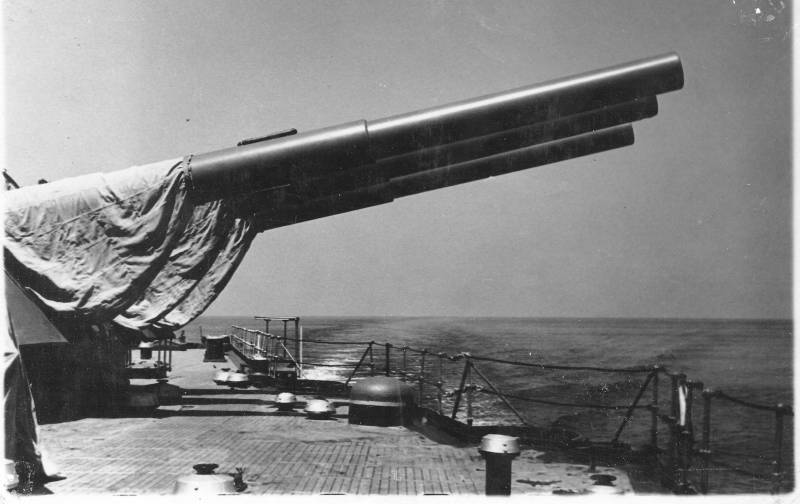
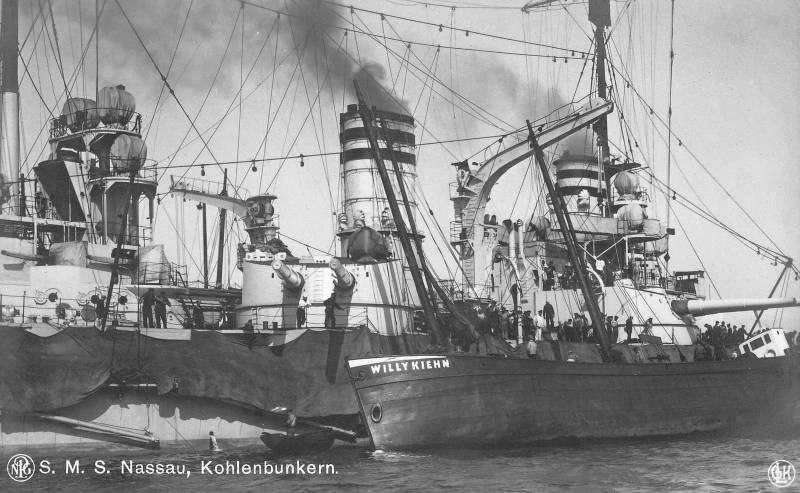
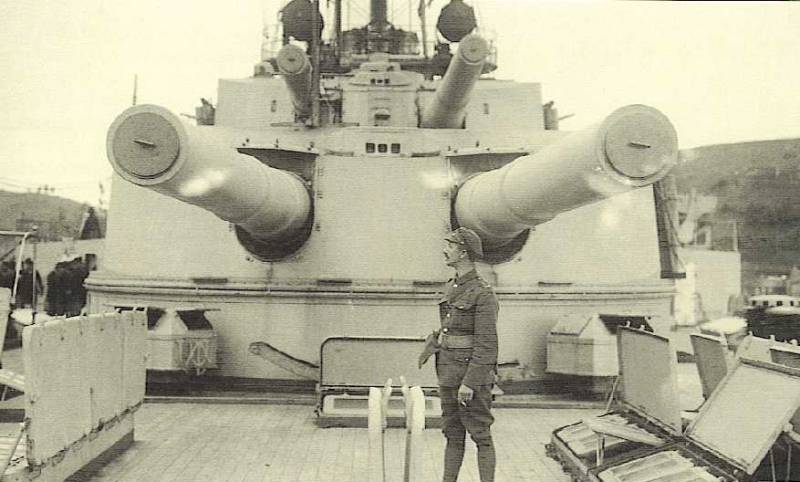

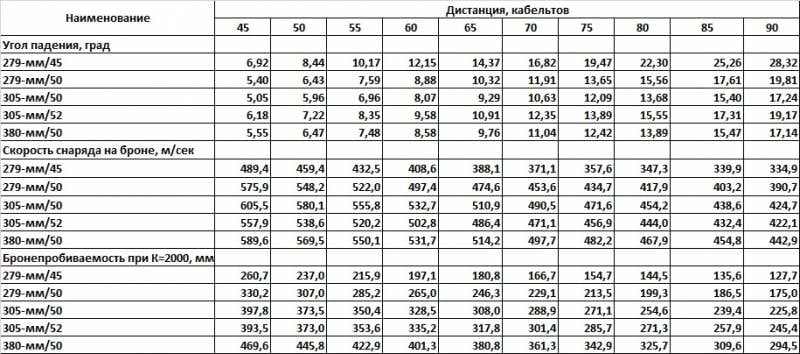


Information